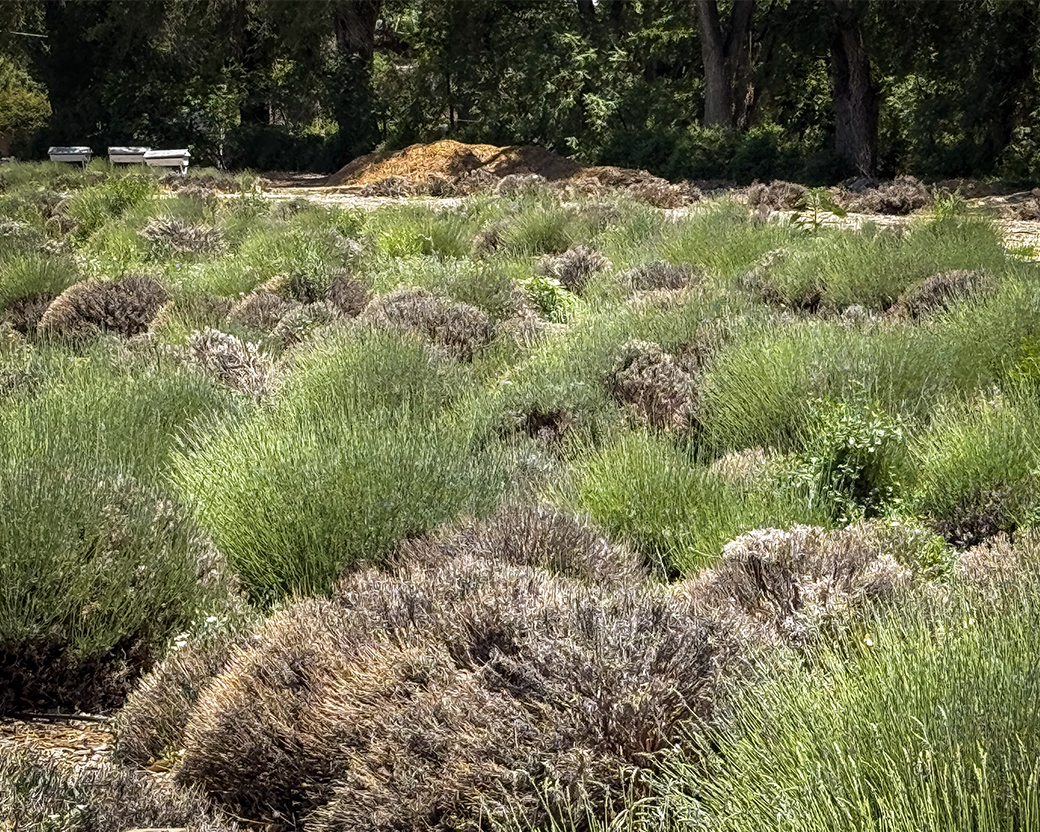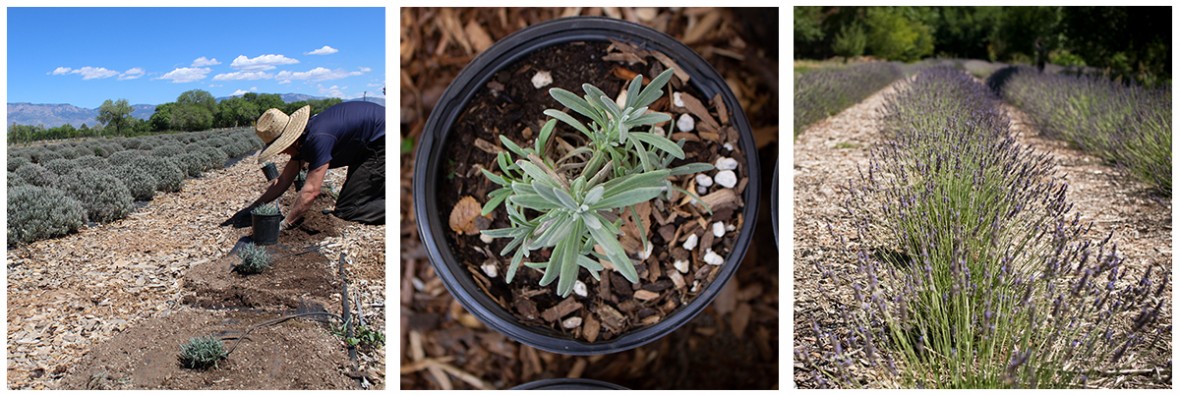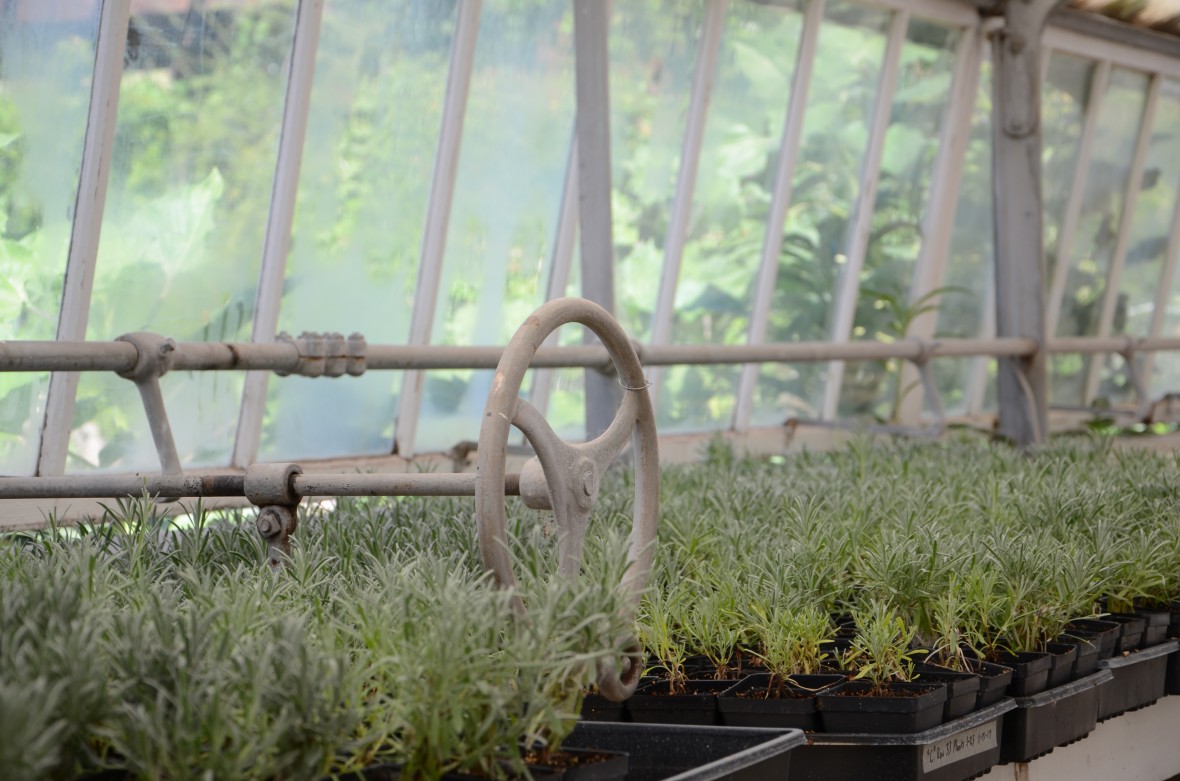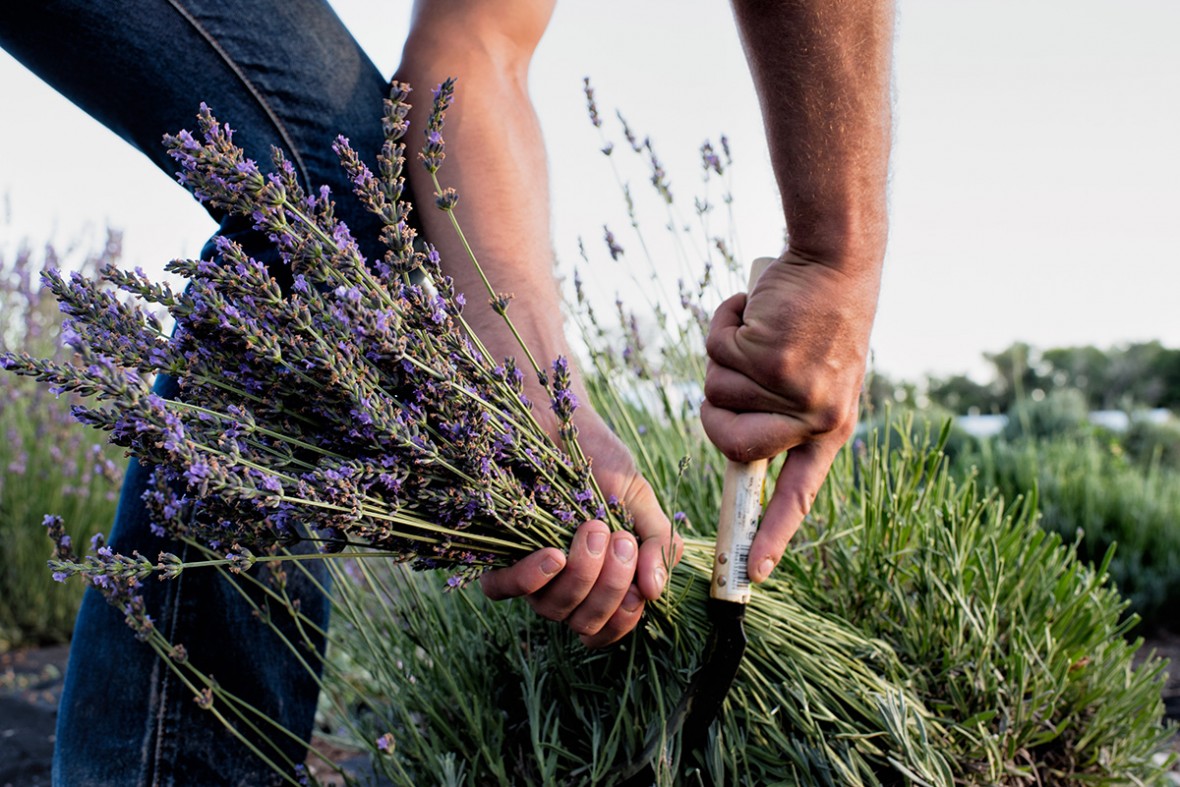
If you have visited the farm recently, you may have noticed that our lavender fields look a little different this year. While they may not be as full as in years past, there is a deeper story behind what you are seeing—one of natural cycles, climate challenges and the realities of regenerative farming in a complex environment.
A season of transition
Many of our beautiful lavender plants are over 12 years old. That is an impressive run for lavender, which typically thrives for 8 to 12 years. We have known this moment was coming and have spent the past few seasons preparing. This year marks the beginning of a major replanting effort, and the gaps you see in the fields are being filled with new, hand-propagated plants grown in our greenhouse from our healthiest existing stock.

When the weather has other plans
New Mexico’s high desert climate is never without its challenges, and this past winter was particularly odd. Warm days and freezing nights—not to mention very little rain—made it difficult for our irrigation system to keep up. Water left in the lines froze overnight, causing breaks and leaks that required constant repairs. This kind of unpredictable weather is hard on both infrastructure and plants, and it is something our farm team manages with creativity and persistence.
A feast for gophers
Another unexpected challenge this year has come from underground. Gophers, who get much of their moisture from plant roots, have found our lavender fields especially appealing. With increased activity in nearby open spaces, we have seen a noticeable spike in gopher damage. We are currently working with a local, humane pest management company to safely remove and relocate these unwelcome (but cute) guests.
A close look at plant health
Some of our lavender has also been impacted by Alfalfa Mosaic Virus, which spreads by touch—especially in tightly planted areas. Infected plants appear stunted and yellowed, and unfortunately, there is no treatment. Our team has been carefully removing these plants and adjusting spacing in our replanting efforts to slow the spread of disease. Looking ahead, we are also monitoring global concerns like Stolbur phytoplasma, a disease beginning to affect lavender in other parts of the world. It has not reached us, but we are staying vigilant.

Investing in resilience
As we replant, we are also taking the opportunity to adapt the way we care for these new generations of lavender. Our farm team is replacing plants block by block, aligned with irrigation zones to ensure that plants of similar age receive the right amount of water. New drip lines are being installed directly under the plants, insulated by both the foliage and fresh mulch. We are also adding soil moisture sensors to monitor hydration levels at the root zone, helping us water more efficiently during the dry months.
While our own lavender plants regenerate, we are leaning on a few trusted sources of certified organic essential oil—mostly from New Mexico, with some from around the United States—to continue crafting the LP lavender products you know and love. These partners share our high standards for the quality and integrity of everything we offer.
Farming in New Mexico’s climate has never been easy—but it is always worth it. We are incredibly proud of the work our team is doing to steward the land and ensure a vibrant future for our lavender fields. Thank you as always for your support!

Photo by Sergio Salvador
